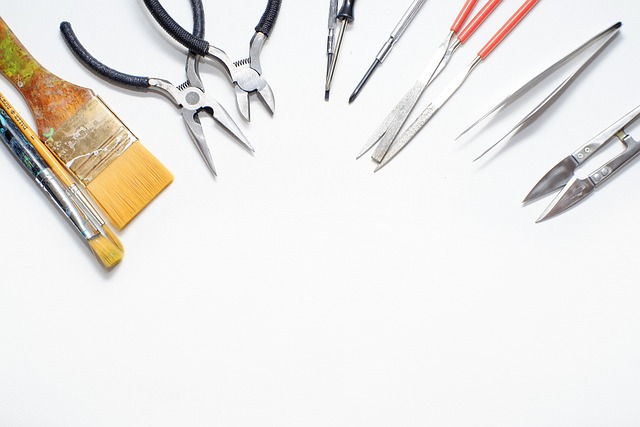Organic clogs in household drains, caused by grease, food scraps, and hair, can be effectively tackled using eco-friendly methods. Enzymatic cleaners or DIY solutions like baking soda and vinegar are cost-effective and safe alternatives to harsh chemicals. Starting with a baking soda and vinegar mixture, followed by plunger use (with a tight seal) for minor clogs, can help break down buildup. For more severe cases, a plumber's snake is recommended. These natural unclogging methods save money, reduce pipe damage, and promote longer-lasting plumbing systems, serving as practical DIY solutions for organic drain clogs.
Are you tired of dealing with stubborn organic clogs in your drains? It’s time to explore effective solutions that go beyond conventional methods. This comprehensive guide delves into the world of enzymatic cleaners and their remarkable ability to tackle organic obstructions naturally. We’ll unravel the causes of these clogs, showcase the advantages of eco-friendly cleaning agents, and provide DIY steps using simple ingredients like baking soda and vinegar. Learn when to reach for advanced tools like a plumber’s snake and when professional help is the best course of action.
- Understanding Organic Clogs and Their Impact
- Benefits of Using Enzymatic Cleaners
- DIY Solutions: A Step-by-Step Guide
- – 3.1 Plunger Use and Techniques
- – 3.2 Baking Soda and Vinegar Mixture
Understanding Organic Clogs and Their Impact

Organic clogs are a common issue in household drains, causing disruptions and potential damage if left unattended. These clogs are often caused by a buildup of grease, food scraps, hair, and other natural substances that accumulate over time. While a traditional plunger can be effective for some blockages, organic clogs might require more specialized cleaning methods.
In such cases, enzymatic cleaners offer a gentle yet powerful solution. These eco-friendly products utilize enzymes to break down organic matter, making them an excellent alternative to harsh chemicals. By combining baking soda and vinegar or using a plumber’s snake with an enzymatic cleaner, DIY enthusiasts can tackle stubborn drain clogs without resorting to extreme measures. Natural unclogging methods not only save money but also reduce the risk of damaging pipes, ensuring a longer-lasting plumbing system.
Benefits of Using Enzymatic Cleaners

Using enzymatic cleaners for organic clogs in your drains offers several significant advantages over traditional chemical-based methods. One of the key benefits is their gentle yet effective nature; these cleaners break down organic matter, like hair, grease, and food scraps, into harmless byproducts that are easily flushed away. This makes them an excellent DIY solution for unclogging drains without resorting to harsh chemicals that can be damaging and harmful to the environment.
Enzymatic drain cleaners are also cost-effective and accessible, providing a more affordable alternative to professional plumbing services or commercial drain cleaners. They are easy to use; you simply pour the enzymatic cleaner down your drain, let it work for a specified time, and flush. This DIY approach not only saves money but also empowers individuals to take care of minor plumbing issues themselves, reducing the need for frequent calls to plumbers. Additionally, their natural composition makes them safe for septic systems, ensuring that your unclogging method doesn’t cause further environmental damage or system disruption.
DIY Solutions: A Step-by-Step Guide

When it comes to tackling organic clogs in your drains, many homeowners opt for DIY solutions as a cost-effective and eco-friendly alternative to professional services. One of the simplest and most popular methods involves using a combination of baking soda and vinegar – a natural unclogging duo that can often clear out even stubborn drain obstructions. Here’s a step-by-step guide:
1. Start by pouring ½ cup of baking soda down the blocked drain. Baking soda acts as a mild abrasive, helping to break up any organic buildup.
2. Follow this with a mixture of equal parts white vinegar and warm water – about 1 cup of each. The vinegar’s acetic acid will help dissolve any remaining clog, creating a frothy reaction that can often clear the drain.
3. For more severe clogs, consider using a plumber’s snake (also known as a drain auger) to physically remove any obstructions. This tool is especially useful for stubborn hair or foreign objects that have caused the blockage.
– 3.1 Plunger Use and Techniques

When it comes to tackling organic clogs, a plunger is often your first line of defense. For DIY clogged drains, this simple tool can be incredibly effective. Start by pouring 1/2 cup of baking soda down the drain followed by 1 cup of white vinegar. This natural unclogging method helps break down grease and grime. Then, quickly apply the plunger with a strong up-and-down motion. Make sure the seal is tight to create a water-tight seal for maximum pressure.
If this initial attempt doesn’t clear the clog, don’t panic. Consider using a plumber’s snake—a flexible metal cable that can break through stubborn blockages. Feed the snake into the drain and twist it to dislodge whatever is causing the obstruction. If all else fails, professional Drain cleaning services might be necessary, but with these DIY methods, you’ve taken a good first step in addressing the issue without resorting to harsh chemicals or calling a plumber right away.
– 3.2 Baking Soda and Vinegar Mixture

When it comes to tackling organic clogs in your drains, a popular and effective DIY solution is the baking soda and vinegar mixture. This natural unclogging method is an excellent alternative to harsh chemical cleaners and can often be just as efficient when used correctly. By combining these two common household ingredients, you create a powerful enzyme-based cleaner that can break down grease, soap scum, and other organic matter buildup.
To use this remedy, pour 1/2 cup of baking soda down the drain followed by 1 cup of white vinegar. The fizzing reaction will begin almost immediately, creating a chemical reaction that helps to dislodge any clog. After waiting for about 30 minutes to an hour, use a plumber’s snake or plunger to break up and remove any remaining debris. This method is particularly effective for minor clogs and can save you the cost and hassle of calling a plumber, especially if you regularly experience slow drains due to built-up grease or food particles.
